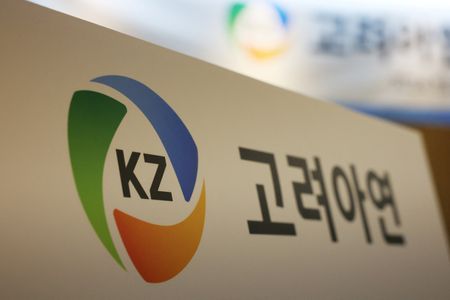By Florence Tan, Trixie Yap and Chen Aizhu
SINGAPORE (Reuters) -Oil shipping rates extended their rally on expectations of a tightening in global tanker supply from wider U.S. sanctions on Russia’s fleet and traders’ demand for ships to load Middle East oil for Asia, industry sources said on Wednesday.
On Tuesday, Shell booked three Very Large Crude Carriers, capable of carrying up to 2 million barrels of oil, at the rate of Worldscale 70 to load Middle East crude in early February and Chinese refiner Shenghong Petrochemical booked two VLCCs for the same loading period at the same rate, a shipbroker said.
Worldscale is an industry tool to calculate freight charges. For comparison.
Traders are expected to seek more tankers to load crude from Saudi Arabia in February, which could drive freight rates higher, the shipbroker said.
China’s Unipec booked a further 10 tankers to transport oil from the Middle East, according to fixture data on Wednesday. Since Friday, Unipec has fixed 23 vessels to ship crude from the Middle East to China, the data showed.
The robust demand pushed the rate for a VLCC on the Middle East to China route, known as TD3C, higher to WS70.45 on Wednesday, up WS10.75 from the previous day, according to two shipbrokers and a trader.
This is equivalent to a 15% rise, bringing the cost to charter a supertanker on that route to $4.1 million, said the second shipbroker.
Supertanker rates on other routes have seen similar increase, he added.
The rate for VLCCs from the Middle East to Singapore rose by WS10.45 to WS71.80, while the rate for West Africa to China gained WS9.23 to WS70.67, he said.
Shipping crude from the U.S. Gulf to China will now cost $8.715 million per voyage, up $1.895 million from Tuesday, he added.
Another shipping executive said Aframax tankers chartered to ship Russian ESPO Blend crude from the Pacific Port of Kozmino to China has been fixed at $6 million to $6.5 million, five times the rates seen last week. Shipowners have since raised their offers to $8 million, a separate senior oil trader said.
PRODUCT TANKERS
Tanker freight costs for “clean products” such as gasoline, diesel and jet fuel, have also risen by about 10% since the start of the week, according to data from SSY Tankers and trade sources.
Some regional routes out of northeast Asia were already seeing an uptick in enquiries before the sanctions were announced as traders were rushing to fulfil requirements before Lunar New Year at end-January, one shipbroking source said.
The cost to ship around 40,000 metric tons of refined fuels from South Korea to southeast Asia has climbed to $685,000 from $480,000 since the start of the year, SSY pricing data showed.
Fresh sanctions on some medium-range (MR) tankers, that can carry around 40,000 tons of clean products, further drove up freight rates, one Singapore-based source said.
The person added that sanctions on Aframaxes that carry crude oil could drive demand for long-range (LR) tankers if some charterers decide to switch to the latter, though it has not happened yet.
However, another shipbroking source voiced scepticism about a rise in freight rates, as sanctioned product tankers account for only about 3-4% of the global fleet. He said that the demand for MR tankers should ease after requirements for ships in January are covered, with the impact on sanctions to be minimal for this fleet.
Surging freight costs and spot premiums for Middle East crude are squeezing Asian refiners’ margins. [CRU/M]
Complex refining margins in Singapore, the bellwether for the region, slumped to $1.17 a barrel, from $4.69 on Jan. 9, before the sanctions were announced, LSEG data showed.
(Reporting by Florence Tan, Trixie Yap, Chen Aizhu in Singapore and Jonathan Saul in London; Editing by Christian Schmollinger and Tomasz Janowski)











